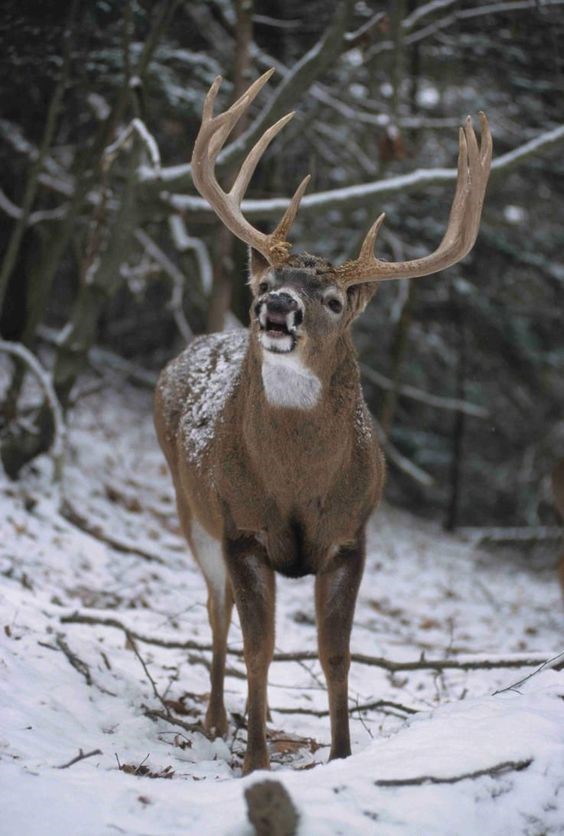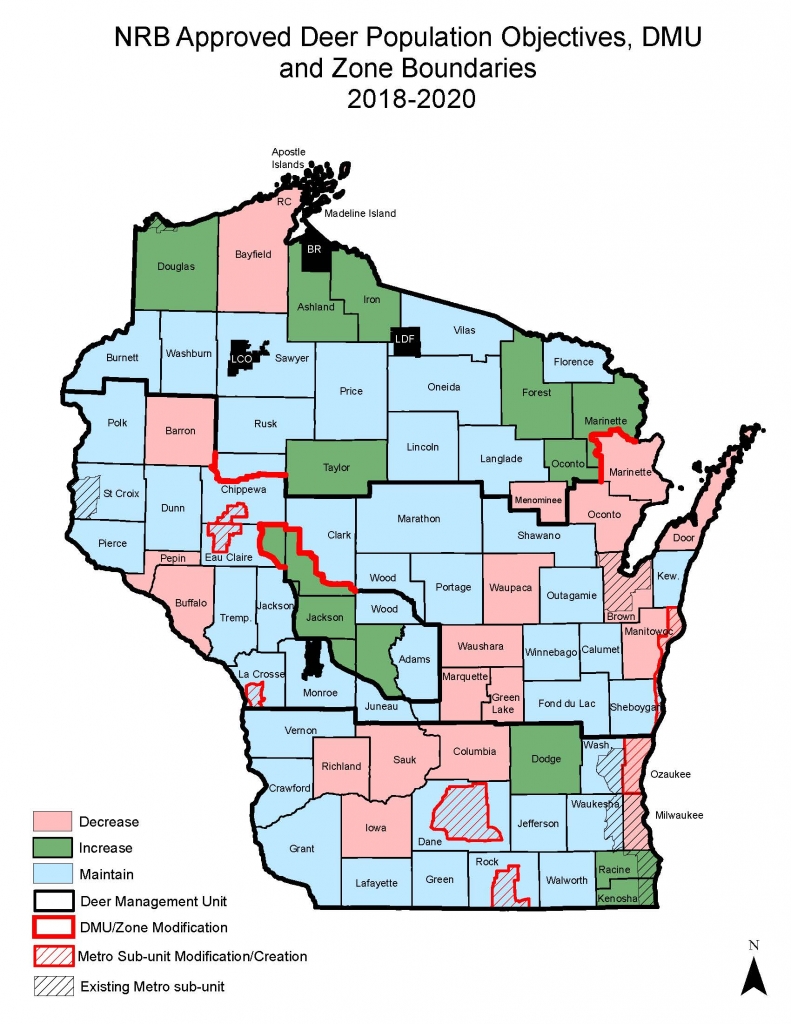DEER MANAGEMENT
From many perspectives, white-tailed deer are a very important part of the Wisconsin landscape and culture. Deer are a wonderful and troublesome part of Wisconsin, depending on your point of view. Wisconsin’s deer herd is managed by setting three-year population objectives for sections of the state called deer management units. While someone will always want more or fewer deer in a given area, the DNR must look at the big picture in attempting to keep deer numbers within a range that is both ecologically responsible and acceptable to most Wisconsin residents. Ideally, the population objectives proposed by wildlife managers and County Deer Advisory Councils will produce a healthy heard, a robust ecosystem, few deer damage complaints and good hunting and wildlife watching opportunities for anyone to enjoy.
- 2018-2020 Deer population objectives
- Deer population objectives are set every three years. Objectives are determined through recommendations from the County Deer Advisory Councils and consideration of deer population metrics. Once the objectives are set, wildlife biologists and the CDACs work together to set hunting quotas and seasons to move the local deer population in the direction of that objective.
- Click here to view a larger PDF.
- Population monitoring and research
- Since the early 1900s, Wisconsin state officials have been tracking deer populations and harvest. As technology and scientific methods have advanced, population and harvest data has become more accurate and readily available. Wildlife biologists closely monitor deer population dynamics so they can then estimate the numbers that may be harvested to keep populations at healthy levels that are socially acceptable to both hunters and non-hunters alike.
- Deer population metrics
-
- Wisconsin Deer Metrics System: harvest and population data, deer health information and deer impact measurements
- Wisconsin Big Game and Turkey Harvest Summary [PDF]
- Current harvest data: this season’s deer harvest, updated weekly throughout the hunting season
- Wisconsin wildlife reports: harvest data, hunter opinion surveys, wildlife population survey results and more from the last two years
- Monitoring surveys
-
- In addition to observations and research done by DNR biologists, citizen volunteers help inform deer population models by participating in these annual or ongoing wildlife surveys:
- Wisconsin deer hunter wildlife survey
- Snapshot Wisconsin
- Operation Deer Watch
- Sex – Age – Kill model
- SAK VideoThe Sex-Age-Kill (SAK) population model is used by the DNR to estimate the number of deer in Wisconsin. SAK estimates help determine how many bucks and antlerless deer can be harvested each year during the hunting season in order to make the population increase, decrease or stay the same. SAK is based on a robust dataset including the number of bucks harvested each year and the ratio of fawns per doe observed each year.
Learn more about SAK:
- Wisconsin’s Deer Management Program: the issues involved in the decision-making [PDF]
- Deer health
-
- CWD in Wisconsin: Chronic wasting disease (CWD) is a degenerative disease of the brain and nervous tissue that infects white-tailed deer and other cervids. The Wisconsin Department of Natural Resources began monitoring the state’s wild white-tailed deer for CWD in 1999. The first positives were found in 2002 through testing of hunter-harvested deer in November 2001. While testing a harvested deer is not required, hunters are encouraged to learn about CWD in Wisconsin and stay up to date on mandatory baiting and feeding restrictions.
- Common health issues for deer
- What to do if you see a sick deer
- Precautions for using lead ammunition
- Considerations for winter deer feeding in Wisconsin [PDF]
- Winter Severity Index
- The winter severity index (WSI) is a measurement to help gauge the effects of the winter weather on deer survival. The index was developed in the early 1970s and is calculated by adding the number of days with 18 inches or more of snow on the ground to the number of days when the minimum temperatures were 0 degrees F or below. In general, the severity of the winter is based on the total number of points accumulated over the collection period. A winter with an index of less than 50 is considered mild, 50 to 79 is moderate, 80 to 99 is severe and over 100 is very severe.
Annual harvest plans take into account the WSI totals, as this index provides insight into the number of deer that may have been lost due to the weather conditions. Deer have both physiological and behavioral characteristics that allow them to survive Wisconsin winters, provided the harsh conditions do not persist for long periods of time. However, in very severe winters, up to 30% of the deer herd may be lost, dramatically affecting the overall populations. The WSI is calculated for 34 locations throughout northern Wisconsin. Collecting WSI information at these many locations allows biologists to manage deer populations at a localized level where differences in weather conditions between stations can be dramatic. WSI data is not collected in the southern portions of the state because the milder conditions do not impact the deer herds as significantly there.
- Damage and nuisance deer issues
- Wisconsin has programs designed to help farmers and other residents when deer are damaging crops or property, or when they become a safety hazard.
- Deer Advisory Committee
- The Deer Advisory Committee is a diverse group representing government agencies, non-governmental organizations, tribal interests and conservation groups.


